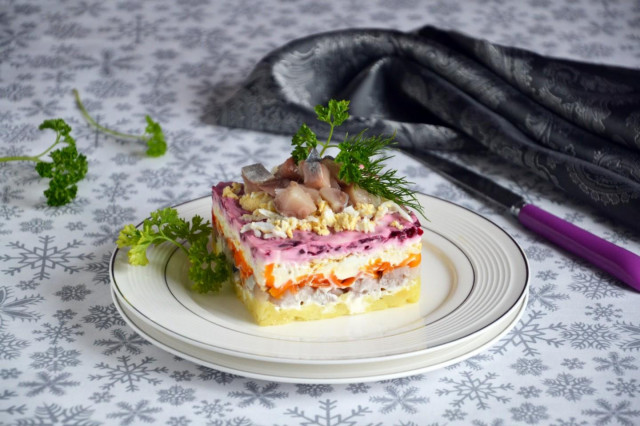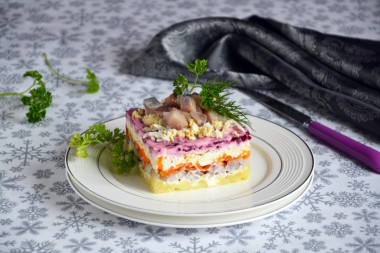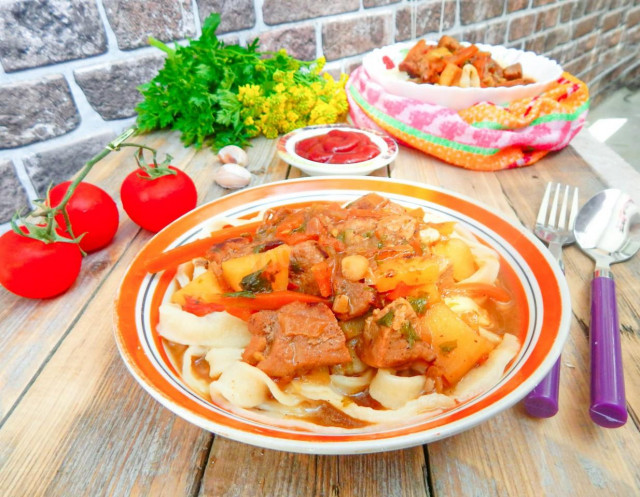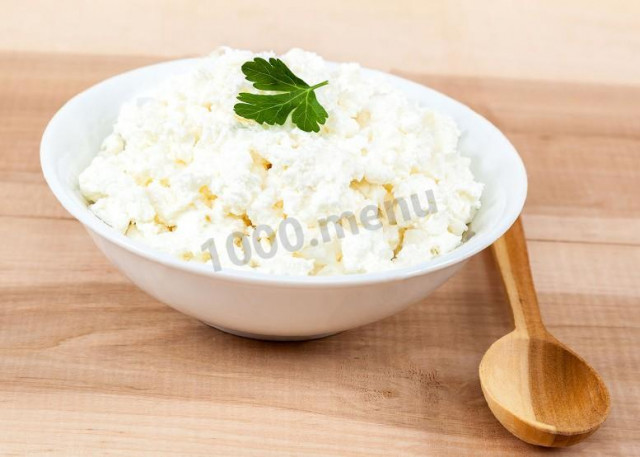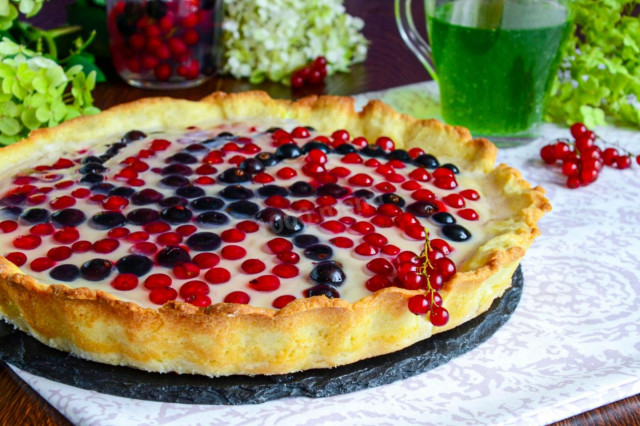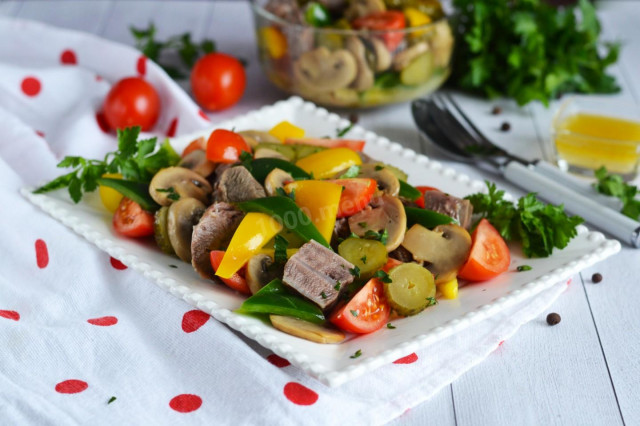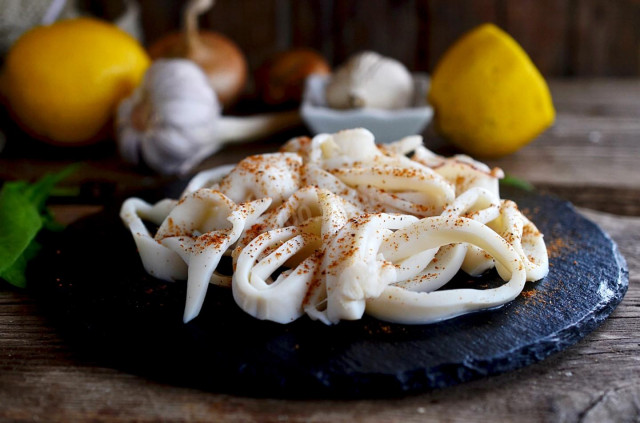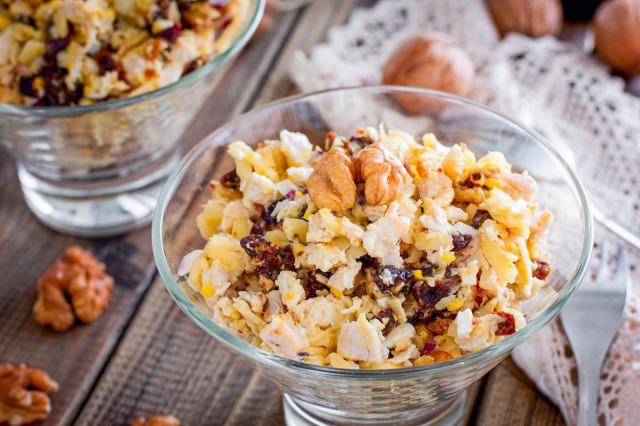Composition / ingredients
Step-by-step cooking
Step 1:
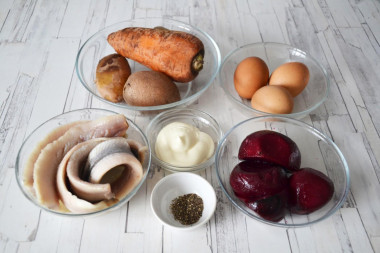
How to make a Fur coat salad with mayonnaise? Prepare the ingredients. To cook a fur coat with mayonnaise (or herring under a fur coat) we will need: fillet of lightly salted herring; potatoes; carrots; eggs; beetroot; ground black pepper (optional, I did not add) and mayonnaise.
Step 2:
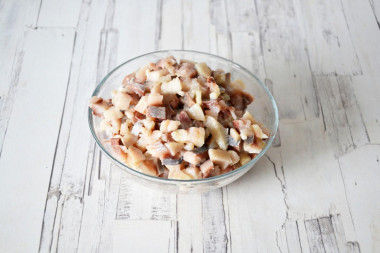
Cut the herring fillet into small cubes.
Step 3:
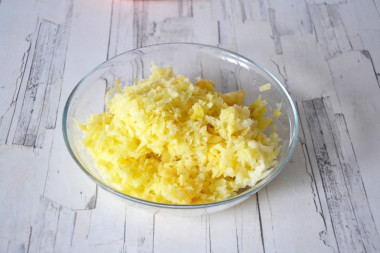
Boil potatoes in a uniform. Then cool and clean. Grate the potatoes on a coarse grater.
Step 4:
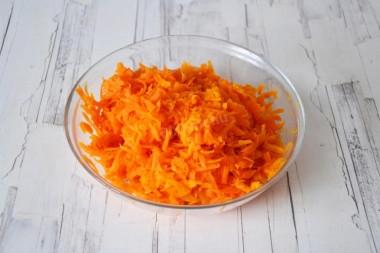
Boil carrots in a uniform. Then cool and clean. Grate the carrots on a coarse grater.
Step 5:
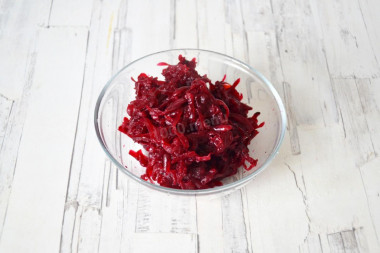
Boil the beetroot in a uniform. I take already boiled peeled beets. But there is no risk of running into a low-quality product. Then cool and clean. Grate beets on a coarse grater.
Step 6:
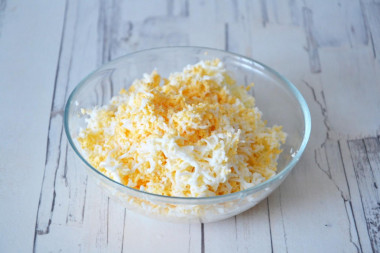
Hard-boil the eggs, cool and peel. Also grate the eggs on a coarse grater.
Step 7:
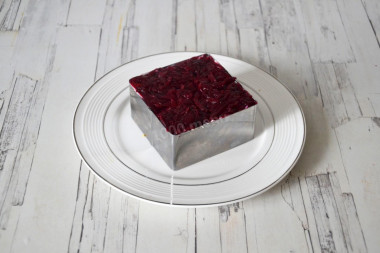
Put layers in a deep salad bowl or on a flat dish, smearing each layer, except herring, with mayonnaise: potatoes – herring – carrots – eggs – beets.
Step 8:
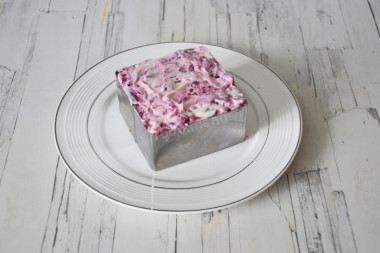
Brush the beetroot with mayonnaise on top. Tighten the salad bowl with cling film and refrigerate overnight for impregnation.
Step 9:
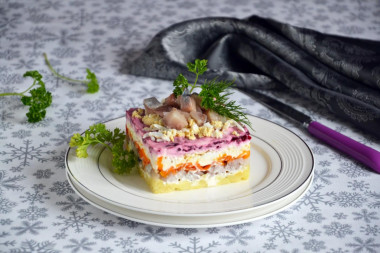
Decorate the salad to taste before serving. I decorated it with dill sprigs, grated egg and the remaining herring fillet. Bon appetit!
If earlier in the Soviet Union there were few products to create culinary masterpieces and people used beets, carrots and potatoes available to everyone, now, although the choice is huge, herring still remains the main salad for many people.
The history of herring under a fur coat goes back to the Scandinavian countries, which have always been famous for the abundance of this delicious fish. In the cookbooks of Norway in 1851, you can find a similar recipe called Sillsallad, which means herring salad in Russian. The recipe included herring, which was placed on the bottom of a large plate, boiled beets, carrots cut into thin circles, and eggs were laid out on top of it. However, all the ingredients were not mixed.
Since the second half of the XIX century and in Russian cookbooks, one can trace the history of the salad recipe "herring under a fur coat". Although this dish was created, of course, without mayonnaise and more like a vinaigrette. The ingredients present in such a salad are incredibly similar to herring under a fur coat.
The appearance of herring under a fur coat in the form in which we know it now is allegedly connected with the innkeeper Anastas Bogomilov, who in 1918 thought about the state of affairs in his establishments. Many visitors, after a good portion of booze, began to rowdy and fight, thus clarifying relations on a political basis. A certain Aristarchus Prokoptsev worked as a cook in the tavern, to whom the owner gave the task to come up with a salad that would be nutritious and high-calorie, so that people would not get so drunk and fight in his taverns.
Aristarchus Prokoptsev approached the matter creatively. He deciphered the composition of the selected ingredients as follows: herring is a symbol of the proletariat, as workers often ordered and loved it; beetroot is a symbol of the revolutionary red banner; the rest of the vegetables are root vegetables (onions, carrots, potatoes), which symbolize the land, and therefore the peasantry; mayonnaise is a French sauce that embodies a tribute to the French revolutionaries.
It is better to prepare mayonnaise yourself. It will be tastier and healthier. See here interesting
recipes for homemade mayonnaise.
Also, as a dressing, you can use not only mayonnaise, but also sour cream or natural yogurt. They can be taken separately or mixed with mayonnaise in any proportion to your taste - this will reduce the calorie content of the dish.
How to cook hard-boiled eggs? So that the eggs do not crack when cooking, put them in cold water and put them to cook on a small fire. Boil the eggs for 9 minutes after boiling, then pour cold water and cool. From a sharp temperature drop, the shell will be better cleaned.
Caloric content of the products possible in the composition of the dish
- Ripe potatoes - 80 kcal/100g
- Baked potatoes - 70 kcal/100g
- Mashed potatoes - 380 kcal/100g
- Boiled potatoes - 82 kcal/100g
- Potatoes in uniform - 74 kcal/100g
- Fried potatoes - 192 kcal/100g
- Chicken egg - 157 kcal/100g
- Egg white - 45 kcal/100g
- Egg powder - 542 kcal/100g
- Egg yolk - 352 kcal/100g
- Ostrich egg - 118 kcal/100g
- Beetroot - 40 kcal/100g
- Dried beetroot - 278 kcal/100g
- Boiled beets - 49 kcal/100g
- Carrots - 33 kcal/100g
- Dried carrots - 275 kcal/100g
- Boiled carrots - 25 kcal/100g
- Herring in vegetable oil - 301 kcal/100g
- Herring in sour cream - 97 kcal/100g
- Herring in tomato sauce - 159 kcal/100g
- Hot smoked herring - 215 kcal/100g
- Pickled herring - 192 kcal/100g
- Fresh herring - 161 kcal/100g
- Salted herring - 217 kcal/100g
- Ground black pepper - 255 kcal/100g
- Salad mayonnaise of 50% fat content - 502 kcal/100g
- Light mayonnaise - 260 kcal/100g
- Provencal Mayonnaise - 624 kcal/100g
- Provencal mayonnaise - 627 kcal/100g
- Table mayonnaise - 627 kcal/100g

